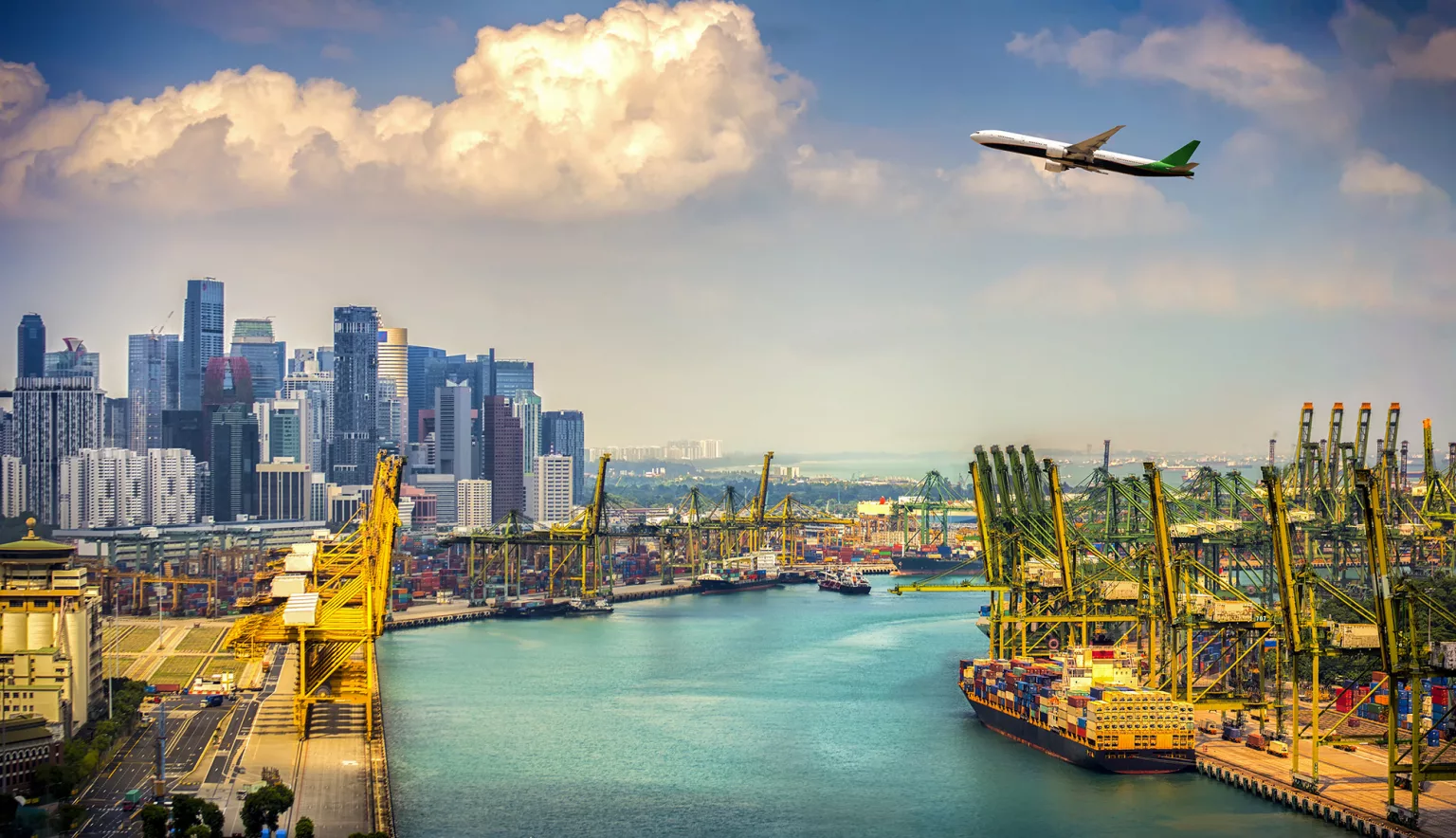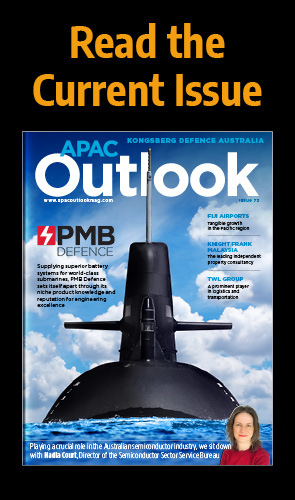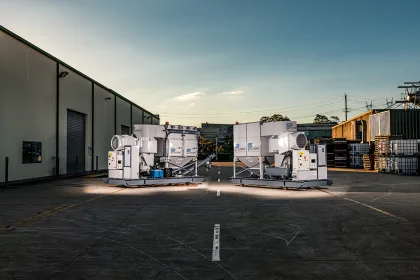We shine a light on the Singapore Logistics Association, and the strides still to be taken to secure relevance, sustainability and competitiveness for the logistics industry.
SPOTLIGHT ON LOGISTICS IN SINGAPORE
Reputed worldwide as a nexus of global trade, for the past 10 years Singapore has consistently ranked top in Asia within the World Bank’s Logistics Performance Index. Boasting both Changi Airport, and PSA, Singapore is home to one of Asia’s largest cargo airports and the world’s largest transhipment seaport respectively.
Unparalleled connectivity secured through the region’s network of trade blocs and Free Trade Areas makes Singapore a gateway to a region that accounts for 60 percent of global GDP. These agreements include the ASEAN Free Trade Area (AFTA), the Asia-Pacific Economic Cooperation (APEC), and most recently the Regional Comprehensive Economic Partnership (RCEP) which is breaking new ground and amplifying trade throughout Asia Pacific.
Singapore’s status as a prime location for trade is evidenced by the host of leading global manufacturers who choose to locate bases and distribution centres in the country, including Rolls Royce and Unilever. The country’s logistics industry is supported by a thriving ecosystem of leading global logistics and supply chain managers such as DHL and Agility as well as homegrown companies such as YCH Group, Bok Seng Logistics and CK Shipping.
Nevertheless, challenges prevail that may hamper the logistics industry’s progress and sustainable development, such as geopolitical tensions which may curtail trade connectivity and a limited pool of manpower. The government has put in place an Industry Transformation Roadmap for logistics players to capitalise on digital technologies and transform industry capabilities to boost competitiveness in international markets, and reduce reliance on manpower.
With sustainability becoming an increasingly pertinent issue for all major players, the logistics sector must collectively push for green supply chain solutions to remain both relevant and competitive. Within this dynamic shift, the sector must also advance on its path to digital transformation and the future of business by incorporating Industry 4.0 and digitalisation. With such innovation comes opportunity, particularly as the industry seeks to recover from the ruinous wake of the COVID-19 pandemic and the disruption wreaked on global supply chains.
The need is therefore born for an industry advocate to consolidate the diverse array of businesses within the logistics sector, from freight-forwarders to transport and warehousing providers, branching all communities to reinforce what is needed to pave the way forward.
Q&A WITH, DAVE NG, CHAIRMAN, SINGAPORE LOGISTICS ASSOCIATION (SLA)
With membership encompassing over 630 logistical enterprises, the Singapore Logistics Association is the trade body developing a thriving supply chain ecosystem for Singapore. Chairman Mr. Dave Ng tells us more.
Can you talk me through the origins of SLA, how it came about, and its initial vision?
Dave Ng, Chairman: The association was first established as Singapore Freight Forwarders Association (SFFA) in 1973 with an initial membership base of 70 companies. A group of like-minded pioneers saw the need for a collective trade body to represent the freight forwarding businesses that were enabling Singapore’s bustling trading activities since the 19th century. The association engaged and shared business issues with government agencies, including the Port of Singapore Authority, to promote better understanding and cooperation between the haulage and seaport community, and began representing Singapore internationally by joining the International Federation of Freight Forwarders Associations (FIATA).
Subsequently in the 1980s, many Singapore-based freight forwarders expanded geographically in SEA as well as broadened their range and complexity of logistics services. New growth areas such as warehousing, regional distribution and integrated logistics flourished in tandem with higher economic activities in infrastructure development and oil and gas.
SFFA was renamed Singapore Logistics Association (SLA) in 1999 to reflect the growth and diversity of its members. New members include those providing transportation and haulage, warehousing and distribution, container depots, project logistics, as well as urban logistics.
“From the outset, we have been committed to supporting the development of world-class and effective logistics capabilities for Singapore and our members”
Dave Ng, Chairman, Singapore Logistics Association
Since inception, how has the SLA developed and progressed in terms of its key objectives and the messages it tries to get across?
DN: The role of SLA to collectively represent and champion the development and growth of the logistics industry’s business concerns and operating needs, as well as to support the expansion of Singapore’s logistics ecosystem, has not changed over the decades. From the outset, we have been committed to supporting the development of world-class and effective logistics capabilities for Singapore and our members, and over time we have continued to build our credibility as a dedicated and reliable partner with government agencies, international bodies, logistics enterprises and other stakeholders.
During its initial years, the association focused on professionalising the industry and setting standards to improve Singapore’s standing in the global market. For example, in 1986, a set of standard trading conditions was officiated to spell out commercial relationships between freight forwarders and shippers. The association’s constitution was also revised with the primary objective of promoting Singapore’s reputation for reliability, integrity and high standards in freight forwarding practice and management. Finally, vocational training was also instituted.
In the 1990s, the association focused on expanding its international presence. An association’s diploma in freight forwarding for the industry was developed with assistance from United Nations Economic and Social Commission for Asia and the Pacific (UN ESCAP) and United Nations Conference on Trade and Development (UNCTAD) Trainmar Resource Centre. The association also hosted the 22nd FIATA World Congress in 1991, which was a first for Asia and Singapore, and a proud moment for the industry as we hosted 1,200 global delegates in our little red dot.
Following our name change from SFFA to SLA in 1999, from the 2000s onwards, we focused on industry branding, capability development such as human capital, innovation and technology, workplace safety, and driving business transformations so that Singapore’s logistics enterprises can remain relevant and ahead of the competition. Our initiatives include printed publications that are used in tertiary schools today as logistics guidebooks, the Supply Chain Challenge which is a national business case competition, and the industry branding movement ‘We Can. Singapore Logistics Makes Everything Possible.’ There is also The Logistics Academy, which is a wholly owned subsidiary training arm of SLA, and the successful inauguration of the annual WSH Innovation Awards for the logistics and transport sector, just to name a few.
Today, Singapore remains one of the region’s leaders in logistics, and is home to many companies with specialised logistics capabilities in healthcare and cold chain, petrochemicals, oil and gas and food supply chains. SLA now represents over 630 logistics enterprises and stays anchored in our commitment to sustain a vibrant and thriving ecosystem for the logistics sector through active industry participation, collaborations with both local and international logistics partners, and by nurturing a pipeline of global and future ready logistics talents for the industry.
We offer a wide range of industry programmes to help enterprises level up their value proposition and be future-ready. We also partner with government agencies and learning institutes to fund and implement business transformation improvements, such as the placement of students with companies to gain industry experience through the Global Ready Talent programme. SLA provides industry inputs and continually raises awareness and adoption of leading business and technological topics, trends and best practices in digitalisation, data sharing, RPA, cyber security, green logistics and sustainability, and workplace safety.
“SLA has been supporting the prospective growth of logtech start-ups as we strongly believe in the synergies they bring to help create a more robust technology ecosystem in Singapore”
Dave Ng, Chairman, Singapore Logistics Association
What do you find most exciting about the logistics industry across Asia Pacific?
DN: Growth through trade and consumerism – even though the COVID-19 pandemic has slowed growth in many economies, the Asia Pacific region has endured and exhibited resilience. The International Monetary Fund projects the Asia Pacific region to remain the fastest growing region despite the pandemic’s resurgence, with a 6.5 percent growth in 2021 that is largely led by China and India.
According to McKinsey, while global trade contracted by about five percent in 2020, Asia’s share of intraregional trade continued to remain at around 60 percent. Besides intra-Asia trade driving the formation of a more robust Asia-for-Asia supply chain, the pandemic also created a boost in new business opportunities for the logistics industry in cold chain, healthcare and e-commerce with advanced economies, and the logistics demand to fulfil these continues to rise.
Aside from trade blocs such as the ASEAN Free Trade Area (AFTA) and the Asia-Pacific Economic Cooperation (APEC), the Regional Comprehensive Economic Partnership (RCEP) Agreement was signed in November 2020. This trade pact of 15 countries in APAC makes it the world’s largest Free Trade Agreement (FTA), covering a market of 2.2 billion people and $26.2 trillion of global output, which is about 30 percent of global GDP and about a third of the world’s population. We expect these trade agreements to boost trading activities.
Coupled with Asia’s large population, we expect trade to continue to drive APAC’s growth.
In addition, more opportunities are gradually opening up as economies recover and step up their economic activities – this makes it increasingly exciting for the logistics industry to support the improving global trade and supply chain activities that inevitably come along with it, even as the region trudges out of a pandemic into an endemic phase.
Innovation and acceleration of new growth drivers in logistics – in addition, Asia had also posted the largest shares of regional growth in key technology metrics according to McKinsey. Therefore, the future of logistics is highly exciting as many of the game-changing, smart innovations and initiatives we speak of today such as autonomous vehicles, augmented reality, robots, and gig economy digital platforms that adopt Big Data and IoT technologies, are expected to come to life in the coming years and bring about revolutionary changes to the way we operate in the region.
On the flip side, what are its biggest challenges?
DN: The fragmentation and disparities in infrastructure, regulations, and logistics capabilities are longstanding challenges across APAC, that hinder productivity and visibility for the sector. This continues to be a major obstacle as seen with the current and ongoing global port congestion due to a myriad of challenges, including varying port and inland logistics competencies across the region. Hence, there is a greater need for seamless cross-border movements and information symmetry for the industry. We’re hopeful that stronger trade relations and continued government to government (G2G) dialogues will further harmonise trade rules, eliminate cross-border complexities and inefficiencies, and boost the region’s competitiveness as a location for supply chains.
What trends are currently transforming the logistics industry in your region? How are you responding to them?
DN: The biggest trend since COVID-19 occurred was the shift from ‘just-in-time’ supply chains to ‘just-in-case’ systems for greater flexibility to meet the evolving and changing needs for essential suppliers. Other trends include altering consumer behaviours and patterns, as the industry witnessed a surge in e-commerce and last mile delivery activities, and many traditional trade flows, routes, and transport modes shifted to a more agile supply chain that can easily pivot to alternatives in a COVID-19 pandemic situation.
To adapt to these trends as well as existing operational challenges such as the tight manpower situation in Singapore, the Singapore Logistics Association has been pushing and curating initiatives for logistics companies to improve business productivity through digitalisation such as RPA, e-invoicing and e-payments, and working together with logistics technology companies to encourage members to adopt digital technologies to improve vehicle routing and fleet management, as well as to monitor and actively manage driver fatigue.
We are also encouraging members to collaborate and band together to optimise their resources and orchestrate an efficient and comprehensive fulfilment network, as well as for members to leverage logtech and join digital platforms enabling end to end supply chain orchestration and resource sharing, so that they can digitally connect and collaborate with other stakeholders in the logistics workflow to receive up-to-date visibility of ship schedules, port and road traffic conditions.
Have you got any projects in the pipeline you wish to highlight?
DN: In recent months, we have inked a couple of key partnerships that will help to attract more talent and specialists into the industry over the next few years. This includes partnering with Yellow Ribbon Singapore to set up a logistics training centre, implement industry accredited logistics training courses, and facilitate employment opportunities with SLA’s member companies.
As part of our continual efforts to build a thriving and sustainable ecosystem for the industry and secure Singapore’s foothold as a world-class logistics hub, SLA has embarked on an industry branding exercise that will help us further strengthen the logistics sector’s image, attracting and nurturing more talent to join this exciting and future-ready space that offers meaningful and progressive careers.
On the sustainability front, the Singapore Logistics Association has launched initiatives to help members keep abreast of sustainability trends, best practices and policies, with the aim of capturing business opportunities with greener logistics solutions and new innovations as we work towards achieving the Singapore Green Plan 2030.
The Singapore Logistics Association has been supporting the prospective growth of logtech start-ups as we strongly believe in the synergies they bring to help create a more robust technology ecosystem in Singapore. These technology enablers focus on the use of digital technologies and products that can potentially harmonise the existing gaps in the air, sea and land sector, and enable logistics service providers to offer new value creation and solutions for their global customers.


























